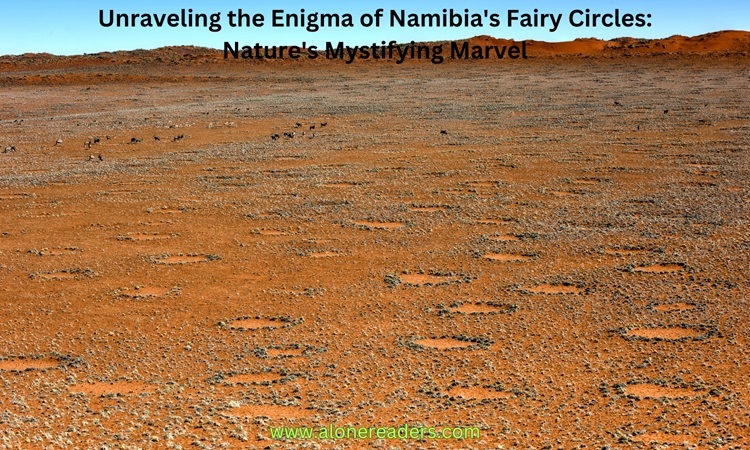
In the vast, arid grasslands of the Namib Desert, a peculiar natural phenomenon has captured the curiosity of scientists, nature enthusiasts, and tourists alike. Known as the "Fairy Circles of Namibia," these enigmatic formations are a series of perfectly circular patches that punctuate the otherwise continuous grassland with barren, circular voids. This extraordinary phenomenon, exclusive to this part of Southern Africa, has fueled debates and research in the scientific community, as they strive to unravel the mystery behind these bewitching formations.
The Fairy Circles, predominantly found in the Namib Desert, extend from Angola to South Africa, encompassing a vast area of over 2,500 square kilometers. These formations are characterized by their striking regularity and uniformity, with diameters ranging from two to fifteen meters. The circles are surrounded by a ring of lush, tall grasses, contrasting vividly against the barren, sandy interior. This stark dichotomy presents an otherworldly landscape that has fascinated onlookers and baffled researchers for decades.
For many years, numerous theories have been proposed to explain the origin of these circles. Initially, local legends attributed them to the footprints of the gods or the work of mystical creatures, hence the name "Fairy Circles." However, as scientific interest in these formations grew, more tangible explanations began to emerge.
One of the earliest scientific theories suggested that the circles were the result of termite activity. Researchers hypothesized that the sand termite, Psammotermes allocerus, was responsible for creating these circles by feeding on the roots of grasses, thereby killing the vegetation and forming barren patches. This theory was bolstered by the observation of a high presence of termites in many of the circles. However, this explanation was not universally accepted, as not all circles showed evidence of termite activity, suggesting that other factors might be at play.
Another compelling theory proposed that the Fairy Circles are a natural consequence of competition for scarce resources, particularly water. In this model, the grasses around the circle edge are thought to benefit from the additional water runoff from the bare center, giving them a competitive edge in this harsh environment. This process of self-organization among plants is not unique to the Namib Desert but is rarely observed on such a large and visually striking scale.
Further complicating the mystery, some scientists have suggested that both termites and vegetation patterns might be working in tandem to create these circles. According to this theory, the termite activity initiates the formation of the circles, and the vegetation pattern emerges as a response to the altered environmental conditions caused by the termites.
Recent studies have employed cutting-edge technology, including aerial photography and computer modeling, to gain a deeper understanding of these circles. These studies have provided valuable insights into the spatial and temporal dynamics of the circles, revealing patterns of growth, death, and rebirth over time. Some circles have been observed to appear, expand, and then gradually be reclaimed by grasses, only for new circles to form nearby, suggesting a dynamic, evolving landscape.
Despite the significant advancements in understanding the Fairy Circles, a definitive explanation remains elusive. This ongoing mystery adds to the allure of these natural formations, drawing scientists and tourists alike to the Namib Desert. The circles not only serve as a subject of scientific inquiry but also as a reminder of the wonders and complexities of the natural world.
The Fairy Circles of Namibia, therefore, stand as a testament to the beauty and mystery of our planet. They challenge our understanding of ecological processes and invite us to ponder the intricate interactions between life and the environment. As research continues, we may someday unlock the secrets of these enigmatic formations. Until then, they remain one of nature's most captivating and unsolved puzzles, a source of wonder and intrigue in the heart of Southern Africa's grasslands.